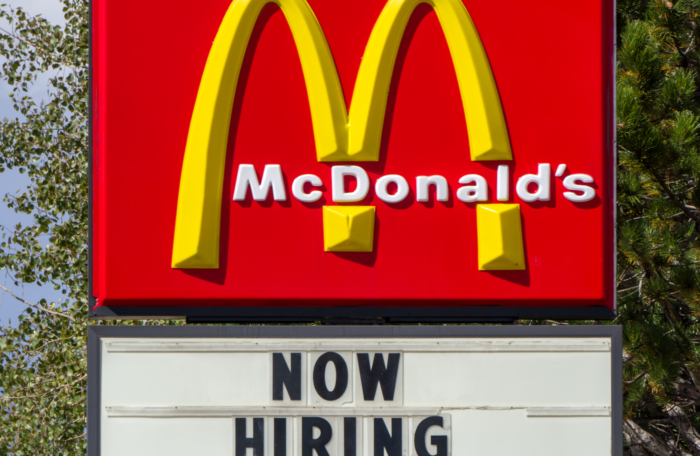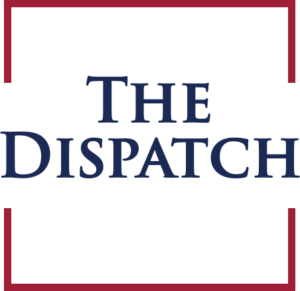Legislators are again considering a proposal to raise the state’s minimum wage through a series of automatic annual hikes. The House of Representatives will vote Thursday on House Bill 1322, which would institute an immediate 31% increase in the state minimum wage, then compel additional increases over the next five years.
HB 1322 would require employers in the state to pay their employees no less than the following wages, or the federal minimum wage (currently $7.25 an hour), whichever happens to be higher at the time:
- $9.50 an hour starting September 1, 2024
- $11.00 an hour starting January 1, 2025
- $12.50 an hour starting January 1, 2026
- $14.00 an hour starting January 1, 2027
- $15.50 an hour starting January 1, 2028
- $17.00 an hour starting January 1, 2029
The bill further requires that the minimum wage be adjusted starting January 1, 2030, according to the increase in the cost of living per the Northeast Consumer Price Index put out by the Bureau of Labor Statistics in the U.S. Department of Labor. (This means, in all likelihood, the minimum wage would only keep increasing.)
New Hampshire doesn’t have its own minimum wage. The state defaults to the federal minimum wage of $7.25 per hour. Nineteen other states either have not adopted their own minimum wages, have a minimum wage set below $7.25, or default to the federal minimum wage. All said, the federal minimum wage applies in 20 states, while 30 states and D.C. have adopted minimum wages above the $7.25 federal minimum.
With HB 1322, New Hampshire would join those 30 states and D.C. But the consequences would not be as rosy as supporters suggest.
How to make an $18 Big Mac
California and Connecticut are two of 22 states celebrated by advocates of higher minimum wages for setting high wage floors this year. It’s only February, and Californians are already bracing for their fast-food prices to jump thanks to a bump in the minimum wage to $20 an hour for fast-food workers. Business Insider reports, “To compensate for the extra cost of labor, restaurants like McDonald’s, Chipotle, and Jack In the Box plan to raise menu prices at their California stores.”
On January 1, Connecticut’s minimum wage was raised to $15.69 per hour and will adjust annually according to the federal employment cost index. Just three days later, Yahoo! Finance reported, “The recent uproar over a McDonald’s location in Darien, Connecticut, charging $18 for a Big Mac combo meal has sparked a nationwide debate on the escalating prices in the fast-food industry. Sam Learner’s viral post on X showcasing the exorbitant prices, including $19 for a Quarter Pounder meal and $17 for two cheeseburgers, has raised questions about the sustainability of such pricing in the industry.”
A 2021 New Hampshire Employment Security, Economic and Labor Market Information Bureau study found that raising the state’s minimum wage would generate similar increases in food prices here. Increasing the minimum wage to $15 an hour would lead to price levels rising by 7% in the food services and drinking places industry and 3.4% in the retail industry, the study found.
When the government makes the cost of labor more expensive, employers have to compensate in the form of raising prices for consumers. And as prices increase at fast-food restaurants, grocery stores, and retail chains, the most vulnerable consumers are the most negatively affected.
Who earns the minimum wage?
According to Bureau of Labor Statistics data, only about one million workers, or 1.3% of all hourly paid workers in the country, earned wages at or below the federal minimum in 2022. Unsurprisingly, minimum-wage workers tend to be young and just starting out, as workers under the age of 25 make up roughly 45% of those paid at or below the federal minimum wage, despite accounting for only 20% of all hourly paid workers.
Proposals to raise the minimum wage typically incorporate the assumption that all workers currently making the minimum wage are stuck there for life. Given that most minimum-wage jobs are entry-level, however, it’s hardly surprising that two-thirds of minimum-wage workers earn more within a year of employment, according to the Heritage Foundation and the National Bureau of Economic Research.
In 2022, according to BLS data, 1,000 Granite Staters made the federal minimum wage (almost certainly all service industry employees earning tips or individuals with severe disabilities who can’t reach productivity levels employers would typically demand). Another 4,000 made below the minimum wage. Federal law allows certain employees, such as vocational education students and full-time students working in certain fields, to be paid below the federal minimum wage. These 5,000 workers amounted to just 0.5% of the New Hampshire workforce and 1.2% of all hourly paid workers in the state.
This small group is highly atypical in today’s job market. According to the New Hampshire Employment Security, Economic and Labor Market Information Bureau, the average entry-level hourly wage in the state is $15.36 as of June 2023. What’s more, among the bottom 10 wage-earning occupations in New Hampshire, the lowest-paying jobs are dining room and cafeteria attendants and bartender helpers, earning an average of $11.69 as of May 2022.
The story of the minimum wage in New Hampshire is the same as it’s been for years, which is that the market has done what legislators wanted to do: lift wages in the lowest-paid occupations. In other words, raising the minimum wage in New Hampshire is the epitome of a “solution” in search of a problem.
Increase in unemployment
Fundamentally, minimum-wage laws are a form of government-mandated price controls, which have real consequences on supply and demand. Just as price ceilings in the form of rent control lead to a decrease in the supply of housing but an increase in demand, price floors in the form of minimum-wage laws lead to an increase in the supply of labor but a decrease in the demand for it.
As economist Thomas Sowell put it in Basic Economics, “By the simplest and most basic economics, a price artificially raised tends to cause more to be supplied and less to be demanded than when prices are left to be determined by supply and demand in a free market. The result is a surplus, whether the price that is set artificially high is that of farm produce or labor.”
And a surplus of labor inevitably means higher unemployment. Of the 20 states (plus D.C.) with the highest unemployment rates, 16 of them have adopted minimum wages that are higher than the federal minimum wage. When the U.S. Congress was considering a bill to raise the federal minimum wage to $15 an hour in 2021, the Congressional Budget Office estimated at the time that 1.4 million workers nationwide would be put out of a job as a result.
Such a strong correlation makes sense when you remember that a government’s edict doesn’t change basic economics. In the case of a minimum wage, just because the government forces employers to pay a certain amount of money for an hour’s worth of work doesn’t mean that the employer magically has enough money to pay all his or her employees that new government-imposed wage, nor does it mean that all his or her employees’ productivity is even worth that new wage.
The most disadvantaged workers—employees who were gainfully employed before the government made it illegal to pay them below a certain amount—are the most negatively impacted by raising the minimum wage. That’s an unavoidable tradeoff of a policy that forces employers to decide which employees he or she can afford to keep.
High minimum wages also favor big corporations, which have deeper pockets, over small businesses. They also limit all employers’ abilities to create entry-level jobs by making it more expensive to hire lower-skilled workers.
New Hampshire boasts the lowest poverty rate (7.2%) and the sixth-lowest unemployment rate (2.5%) in the country, but those figures would worsen if the state makes it more expensive to hire. This was demonstrated by the state’s own study just three years ago.
The state’s 2021 study on the effect of a $15 minimum-wage hike concluded that raising the minimum wage to $15 an hour would have significant negative effects. A $15 minimum wage would, by 2031, cause employment in New Hampshire to be 5,847 lower, New Hampshire’s GDP to be $800 million lower, and the state’s population and labor force to drop by 9,630 and 6,023 people, respectively, due to fewer job opportunities, than if the minimum wage had not been increased.
The same study found that such an increase would cost employers $1.08 billion over 2019 wage costs—a 3.1% increase throughout the New Hampshire economy—borne heavily by an 18.6% increase in wage costs in the leisure and hospitality industries and a 20% increase in the food services and drinking places industry. The end result is that the lowest-wage workers would experience the highest number of job losses, concentrated mostly in the food services and drinking places, leisure and hospitality, and retail trade industries. Such reductions in employment would all but offset the mandated wage increase, as any immediate aggregate increases in personal income would eventually cancel out and begin declining due to job losses.
So, when considering raising the minimum wage, state lawmakers should ask themselves the following: What’s preferable for an employee, a job that pays less than $15 (or $17 or $20) an hour, or no job at all?











